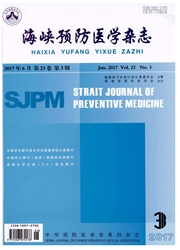

 中文摘要:
中文摘要:
目的探讨人卵巢颗粒细胞生长分化因子-9(GDF-9)、骨形成蛋白-15(BMP-15)的表达与控制性超排卵(COH)过程中卵巢反应的关系。方法对147例因输卵管性不孕或男性不育接受IVF/ICSI治疗的患者,采用GnRH-a黄体期长方案COH,收集患者卵巢颗粒细胞,用Real-time PCR法检测颗粒细胞GDF-9、BMP-15mRNA表达,分析与卵巢反应性的关系。结果卵巢颗粒细胞GDF-9mRNA表达值高反应组〉正常反应组〉低反应组;BMP-15mRNA表达值低反应组高于高反应和正常反应组;获卵数与GDF-9mRNA表达值呈正相关(r=0.662),与BMP-15mRNA表达值呈负相关(r=-0.218);Logistic回归分析显示,年龄、AFC和GDF-9mRNA表达值,是卵巢高反应的主要影响因素(OR=2.57,0.11,0.39)。结论卵巢颗粒细胞的GDF-9、BMP-15表达,可能与COH卵巢反应性相关。
 英文摘要:
英文摘要:
Objective To explore the relationship between growth differentiation factor 9(GDF-9) and bone morphoge- netic protein 15 (BMP-15) in human granulosa cells and ovarian response to controlled ovarian hyperstimula- tion. Methods Real-time PCR was applied to detect the levels of GDF-9 and BMP-15 mRNA collected from 147 cases who underwent IVF(in-vitro fertilization)/ICSI(intracytoplasmic sperm injection). The cases were stimulated with a long gonadotropin-releasing hormone agonist(GnRH-a) protocol during luteal phase. The relationship was analyzed between GDF-9, BMP-15 mRNA levels and ovarian response to gonadotropin. Results The level of GDF-9 mRNA in granulosa cells was highest in high responders and lowest in poor responders. BMP-15 mRNA was significantly higher in poor response group than that in the other two groups. The numbers of retrieved ooeytes were positively correlated with GDF-9 mRNA level (r=0. 662)and negatively correlated with BMP-15 mRNA level. The patient's age, antral follicle cout and GDF-9 mRNA level were main influencing factors of high ovarian response by logistic regression anal- ysis (OR = 2.57,0.11,0.39). Conclusion The expression of GDF-9 and BMP-15 in granulosa cells may affect ovarian response in COH cycles.
 同期刊论文项目
同期刊论文项目
 同项目期刊论文
同项目期刊论文
 期刊信息
期刊信息
